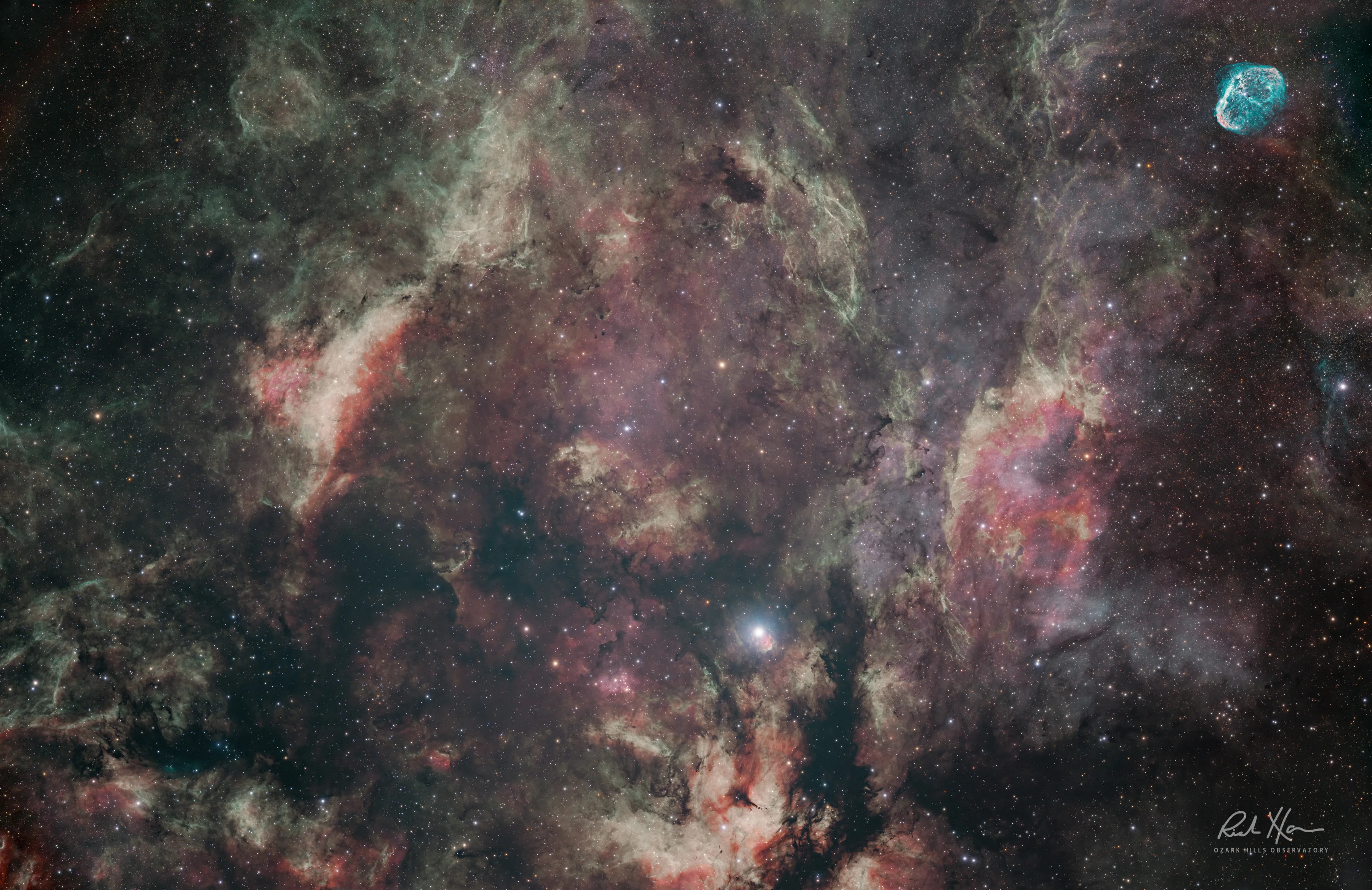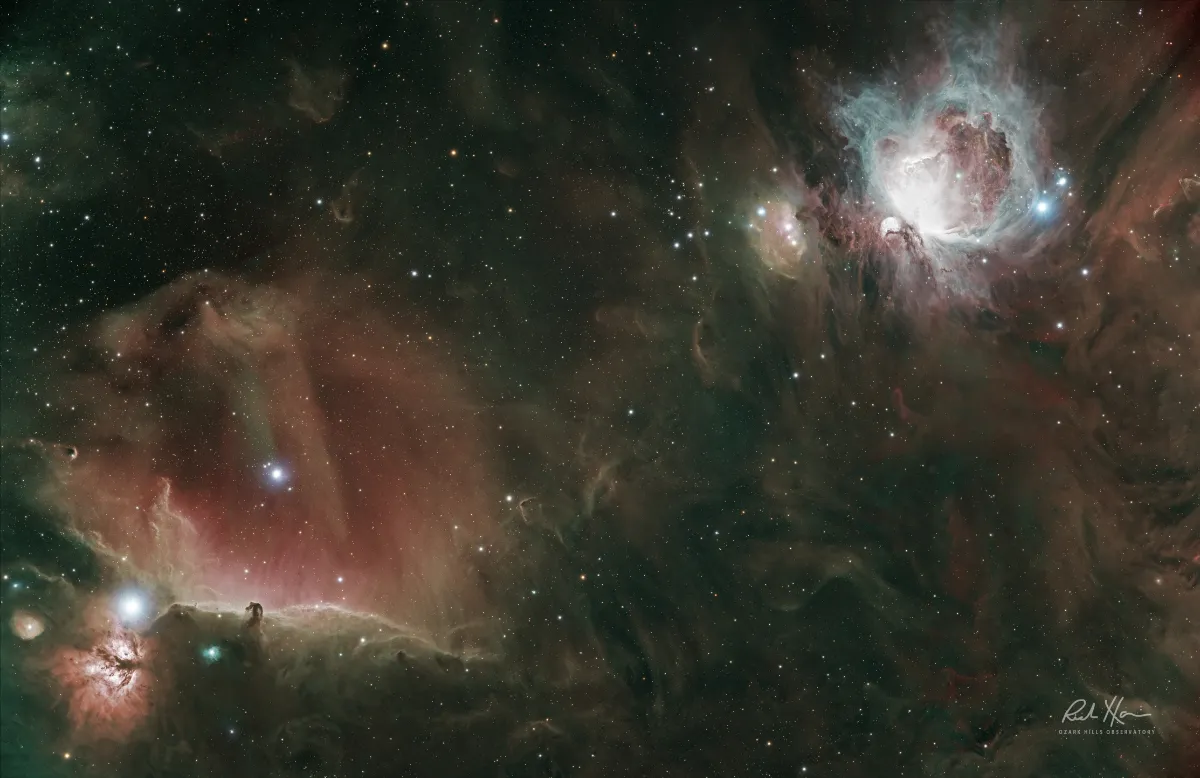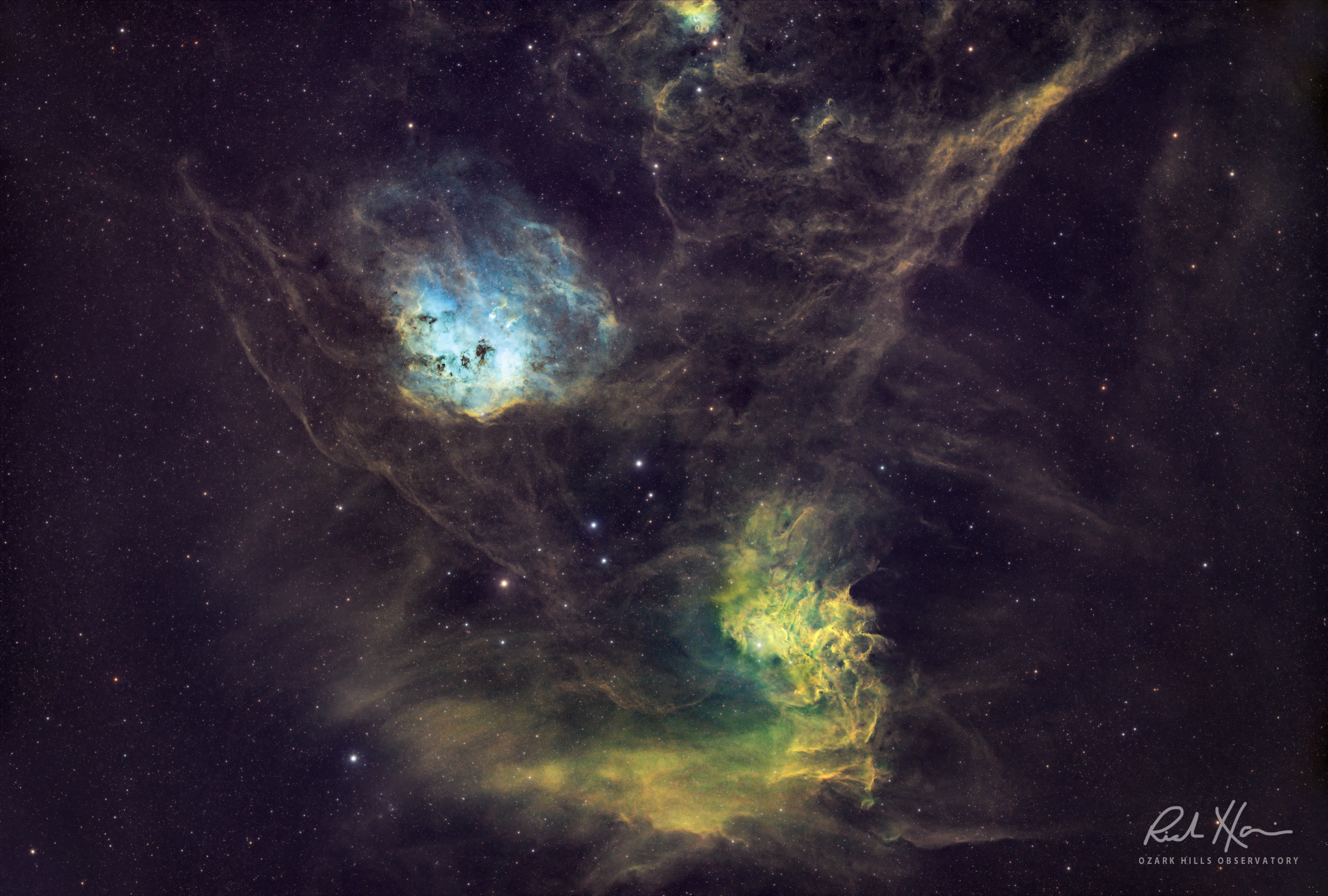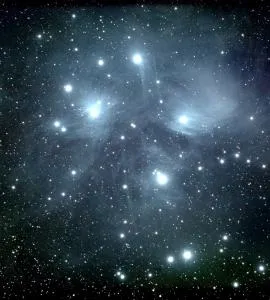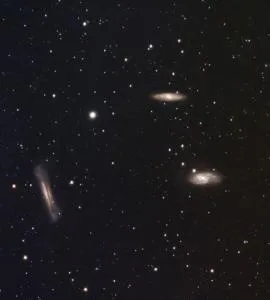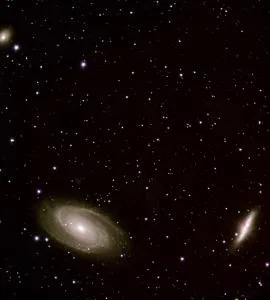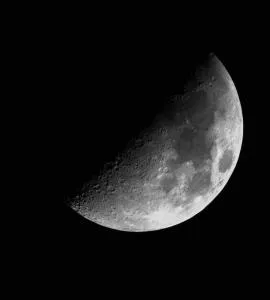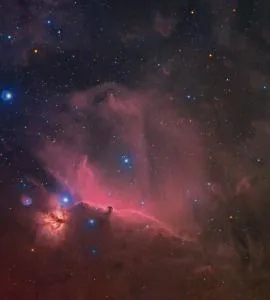The hottest star in our universe WR 102 astrophoto by Richard Harris

WR 102 is one of the hottest known stars in our universe and it's also among the only Wolf–Rayet stars known to be in our Milky Way galaxy. It has a surface temperatures exceeding 200,000 Kelvin. This astrophoto by Richard Harris of Missouri was taken from a remotely operated observatory in Chile using a CDK24 PlaneWave telescope.
Wolf-Rayet stars, are fascinating astronomical objects that provide a window into the extreme conditions and processes that occur in the universe. They are rare, but their impact on the environments around them and the insights they offer into stellar evolution make them subjects of keen interest in the field of astronomy.
They were discovered in 1867, using a 15 inch Foucault telescope at the Paris Observatory, by astronomers Charles Wolf and Georges Rayet (eh hum "Wolf-Rayet"). But it wasn't until 1981 that the nebulosity you see in this astrophoto was detected.
Wolf–Rayet stars are evolved, massive stars that have completely lost their outer hydrogen and are fusing helium or heavier elements in the core. They are usually "on their way out", but that depends on their classification.
How many Wolf-Rayet stars are in our galaxy?
As far as Astronomers have seen so far, there are only 500 total Wolf-Rayet stars in the Milky Way galaxy's 100 billion star count. So, the odds of finding 500 stars out of 100 billion is 0.00005%.
What exactly am I looking at here?
You are looking at a very rare star in our universe that is lossing it's mass into space (the red and blue nebula in the astrophoto). It only has a few thousand more years to exist before it explodes. It is very likely that WR 102 is on its last stages of nuclear fusion, near or beyond the end of helium burning. It has been calculated that WR 102 will explode as a supernova within 1,500 years.
You can barely make out the star itself in this photo but you sure can see the gases around it.
The hottest star in the universe
Stars vary in temperature, with the hottest ones typically being blue in color. The hottest known stars are blue hypergiants and Wolf-Rayet stars, which can have surface temperatures of up to 50,000 Kelvin or even higher. They are characterized by intense luminosity, often shining with a brilliance over a million times that of the Sun. The exact identity of the single hottest star is a subject of research and may change as new observations are made.
WR102 a star that is 200,000 degrees hotter than the Sun and the hottest star ever recorded.


All about WR 102
WR 102 is a star that belongs to the Wolf-Rayet (WR) class of stars. Wolf-Rayet stars are a rare type of massive star characterized by strong stellar winds and broad emission lines in their spectra. Here's what you need to know about WR 102:
WR 102 is located in the Sagittarius constellation.
As mentioned, WR 102 is a Wolf-Rayet star. Specifically, it's classified as a WN-type Wolf-Rayet star. The "N" denotes that it shows strong lines of nitrogen in its spectrum.
WR 102 is one of the hottest known stars, with surface temperatures exceeding 200,000 Kelvin (K).
Wolf-Rayet stars, including WR 102, are known for their high luminosities. They can be hundreds of thousands of times more luminous than our Sun.
WR stars like WR 102 have powerful stellar winds that can reach speeds of up to several thousand kilometers per second. These winds cause the star to lose a significant portion of its mass over time.
Wolf-Rayet stars represent one of the final stages in the life of massive stars. They are thought to be progenitors of certain types of supernovae.
Given its type and stage, WR 102 is expected to end its life in a supernova explosion. Some Wolf-Rayet stars, depending on their mass and other factors, could also be potential candidates for gamma-ray bursts when they explode.
Studying stars like WR 102 helps astronomers understand the life cycles of massive stars and the processes that lead to supernova explosions. These stars also play a significant role in the chemical evolution of galaxies, as they produce and eject heavy elements into the interstellar medium.
WR 102 compared to our Sun
Here's a comparison of WR 102 and our Sun based on several key characteristics:
1. Type and Classification:
WR 102: A Wolf-Rayet (WR) star, specifically classified as a WN-type Wolf-Rayet star. This classification means it shows strong nitrogen lines in its spectrum.
Sun: A G-type main-sequence star (G2V). It's often referred to as a yellow dwarf, even though it appears white from space.
2. Temperature:
WR 102: One of the hottest known stars, with surface temperatures exceeding 200,000 Kelvin (K).
Sun: Has a surface temperature of about 5,778 K.
3. Luminosity:
WR 102: Wolf-Rayet stars can be hundreds of thousands to millions of times more luminous than our Sun.
Sun: Its luminosity is defined as 1 solar luminosity, which is the standard unit of luminosity used for stars.
4. Size:
WR 102: While specific size data for WR 102 might not be readily available, Wolf-Rayet stars are generally larger than our Sun, often several times its radius.
Sun: Has a radius of approximately 696,340 km.
5. Mass:
WR 102: Typically, Wolf-Rayet stars are massive, often having started their lives with more than 20 solar masses. Over time, they lose a significant portion of this mass due to strong stellar winds.
Sun: Has a mass of 1 solar mass.
6. Life Stage:
WR 102: Represents one of the final stages in the life of massive stars. It has already gone through significant evolutionary phases and lost a lot of its original mass.
Sun: Currently in the main-sequence phase, where it has been for about 4.6 billion years and is expected to remain for another 5 billion years or so.
7. Fate:
WR 102: Expected to end its life in a supernova explosion. Depending on its mass and other factors, it could also be a candidate for a gamma-ray burst.
Sun: Will not explode as a supernova. Instead, it will transition to a red giant phase, shedding its outer layers and leaving behind a hot core, which will become a white dwarf. Over billions of years, this white dwarf will cool and fade away.
8. Stellar Winds:
WR 102: Has powerful stellar winds that cause it to lose a significant portion of its mass over time.
Sun: Also has a solar wind, but it's much less intense than the winds from Wolf-Rayet stars.
In summary, WR 102 and our Sun are vastly different in many ways, from their temperatures and luminosities to their life stages and eventual fates. While our Sun is a relatively calm and stable star, WR 102 is a more extreme and volatile star, representing the tumultuous end stages of stellar evolution for massive stars.
The WR 102 astrophoto by Richard Harris equipment and acquisition details
I took aim at the Wolf-Rayet star classified and named "WR 102" with the help of the giant 24" CDK telescope in Chile, and the results are before you.
Astrophoto details
Telescope: PlaneWave 24"
Mount: Planewave L600 direct drive mount
Camera: Moravian C3-61000 Pro, Temp= -10, Gain-0
Guider: ZWO ASI 174mm mini as the guide camera, off-axis guided
Controller: NINA
Acquisition:
6 hours OIII
6 hours Ha
3 hours R,G,B
Darks/Flats/Bias: (15-25 each)
Total time 15 hours
Processing: Pixinsight, Photoshop
Location: Chile/Missouri
Bortle: 1
Wolf-Rayet 102 (WR 102) star and the Bible
In Mark 13, Jesus is speaking of His second coming.
After the destruction of the Temple and the event in Judea, He tells of a universe-shaking event and His great triumph:
"But in those days, after that tribulation, the sun shall be darkened, and the moon shall not give her light, and the stars of heaven shall fall, and the powers that are in heaven shall be shaken. And then shall they see the Son of man coming in the clouds with great power and glory."
Although rare to us, WR 102 is just one of countless creations by our Lord, how great Thou art! In His universe, these sorts of events are just part of His plan. What a treat that we get to witness creation in so many stages during our brief time on this planet.
About the Author

Meet Richard Harris, a passionate and dedicated astronomer who embarked on a cosmic journey at the age of 11 and has been reaching for the stars ever since. Born with an innate curiosity for the universe. Richard's fascination with astronomy ignited when he first gazed up at the night sky and felt an indescribable connection to the cosmos and creation. As a younger lad, Richard spent countless hours poring over astronomy books, studying constellations, and learning about the celestial wonders that grace our skies. In 2001, Richard invented the HyperTune telescope process, which has grown into the standard for German equatorial telescope mount tuning across the globe. He is also the founder of ScopeTrader, a global resource helping to grow the hobby of astronomy which started in 2002, and the CEO of Moonbeam software company, started in 2008. When he's not taking photos of our universe, you can find him with family, playing guitar, or traveling.
